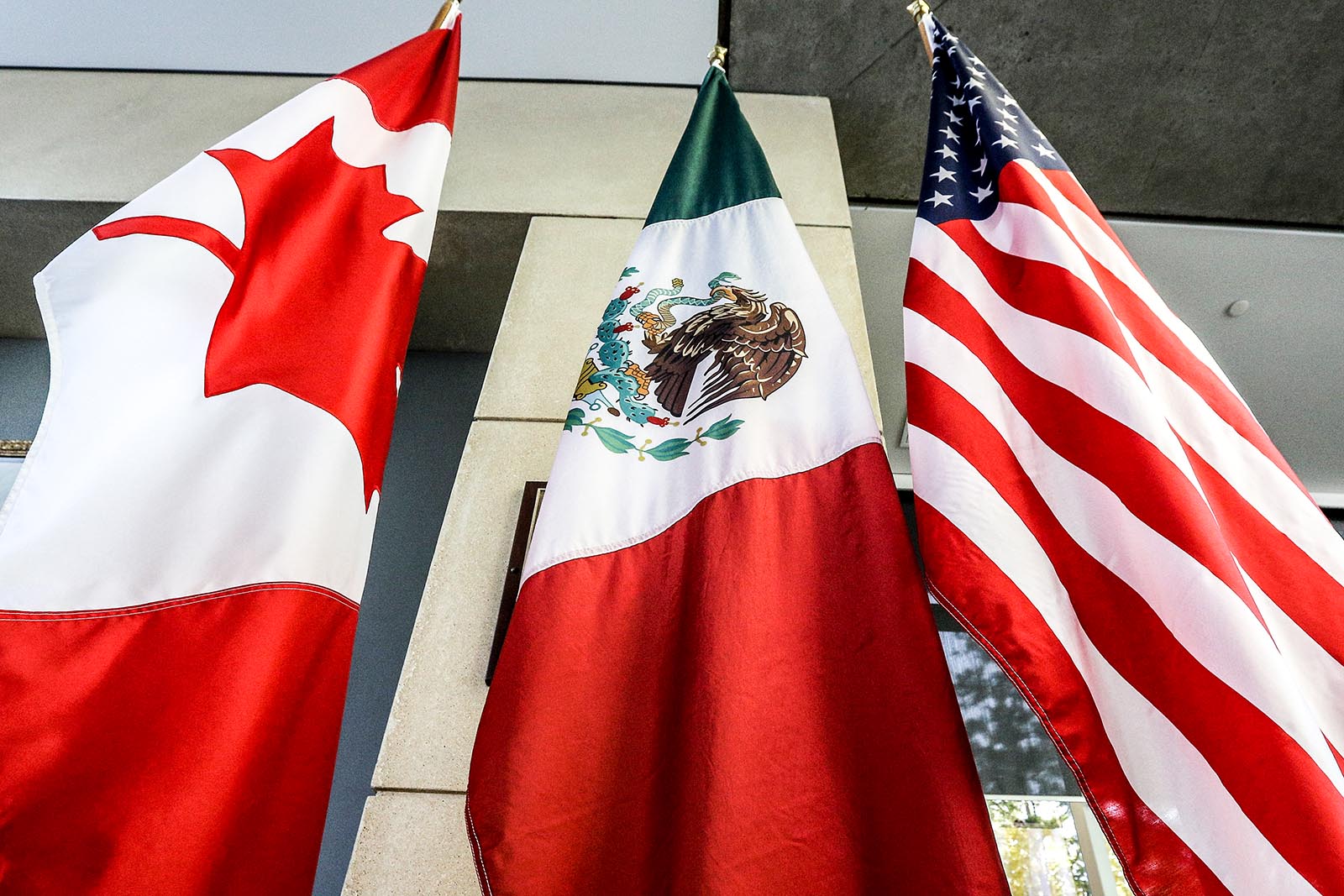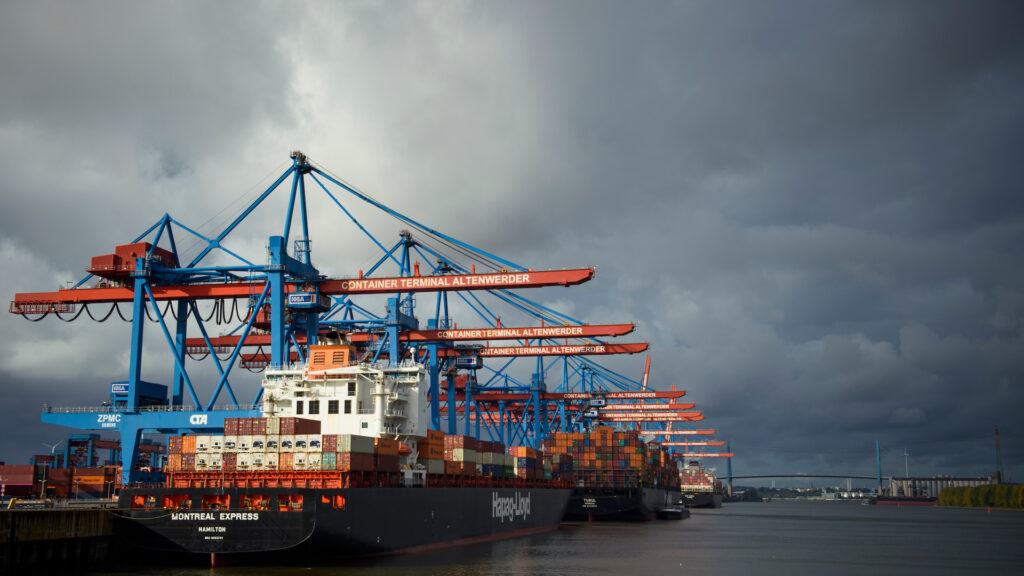Canadian Free Trade Framework Mitigates a NAFTA Demise

Businesses should be analyzing the actual effects of different scenarios in regards to the fate of NAFTA.
Photo: Lars Hagberg/AFP/Getty Images
The NAFTA is a very valuable agreement, but it wouldn’t be the end of the world if it disappeared.
That’s a bold statement, to be sure, and “end of the world” sets a high bar. But many believe that if NAFTA somehow disappeared it would spell disaster. This view is far too pessimistic. Frankly, NAFTA was long overdue for an update, which is part of the reason we find ourselves in the current renegotiation scenario.
But there are several moving parts in play that should help mitigate the uncertainty hampering the investment climate in Canada, even now as the U.S. contemplates withdrawing from NAFTA.
First, there is some question as to what role the U.S. Congress would play and what treatment Congress would accord to both Canada and Mexico in the absence of NAFTA. It is important to note that in the U.S., the free trade treatment accorded to Canada and Mexico is made effective through American legislation—not by the provisions of NAFTA. Clearly Congress would need to be involved.
Second, in the case of Canada, the country had a bilateral free trade agreement with the U.S. that was put into suspension when NAFTA came into effect. The intent of the suspension was that if the NAFTA for some reason disappeared, then the Canada-U.S. Free Trade Agreement (CUSFTA) would come back into being. CUSFTA is not as good an agreement as the NAFTA—it doesn’t have the same clarity and it’s not nearly as developed in the areas of services and investment and intellectual property—but it did provide for the elimination of all duties. For CUSFTA to come back into force would require goodwill between the two countries. Where it could get complicated is if people started thinking about “improving it” at the same time.
This article is part of a three-part series on NAFTA. You can see the other two articles here:
But even then there would still be uncertainty. CUSFTA contains a six-month withdrawal clause. So any action on NAFTA by the U.S. might also include notice that it was pulling out of the previous bilateral agreement within six months.
Third, under the terms of the World Trade Organization, NAFTA is a free trade agreement. Countries are only allowed to accord each other tariff preferences in the context of an FTA. So if NAFTA were no longer in place, Canada and the U.S., and Mexico and the U.S., would be required by the WTO to go back and apply WTO tariffs to each other. The level of tariffs in the WTO is actually lower, by about a third on average, than it would have been at the time of the NAFTA negotiations, so a lot of trade could still take place under WTO tariffs. It should be noted that if the U.S. withdrew from NAFTA, the agreement would remain in force between Canada and Mexico. So trade between Canada and Mexico would remain duty free.
Fourth, although no other country is going to replace the importance of the U.S. market, Canada has been negotiating free trade agreements with other countries. Canada has completed and provisionally implemented an FTA with the European Union. It has a free trade agreement with Korea, with the European Free Trade Association and with several countries in Latin America including Colombia and Chile. In addition, Canada has engaged with 10 other partners in the former Trans-Pacific Partnership in an effort to bring that agreement into force in the coming year. Canada is also negotiating with India and is looking at the prospects of engaging in free trade negotiations with China.
Tough Negotiations Continue
In October, at the fourth round of the NAFTA renegotiations in Washington, several U.S. proposals caused major problems for both Canada and Mexico—and many interested parties in the U.S. Among those proposals were:
Five-Year Sunset Clause—This proposal would terminate the entire agreement after five years unless the parties decided to renew it. Such a clause would create major uncertainty. Most investments designed to take advantage of a trade agreement are amortized over a much longer period than five years.
Dispute Settlement—NAFTA contains three types of dispute settlement: the normal intergovernmental procedure for resolving disputes between the three countries about the interpretation of the agreement, special binational panels for resolving disputes about whether antidumping and countervailing duties are applied in conformity with domestic law, and investor state dispute provisions.
On the intergovernmental procedures, the U.S. has proposed they become advisory in nature, by allowing parties to declare the findings of dispute panels to be erroneous and thereby ignore the findings.
On the special binational panels, the U.S. has proposed they be abolished. Canada and Mexico strongly oppose this.
Businesses can’t sit back and wait for a NAFTA withdrawal. Risk mitigation planning should be taking place now.
On investor state, the U.S. has proposed weakening the criteria used to determine violations and giving parties the right to opt out of the system entirely.
There is a pattern here. The Trump administration does not want to have its freedom of action fettered by international obligations and doesn’t seem to mind if a revised NAFTA does not provide effective ways to defend American interests from actions by Canada or Mexico. Canada has drawn a line in the sand on dispute settlement: To be worthwhile, any trade agreement must have effective dispute settlement provisions to ensure the rules are respected.
Automotive Rules of Origin—Under NAFTA, at least 62.5 percent of all passenger vehicles must be of material from North America to be able to qualify for duty free treatment between the NAFTA parties. The U.S. has proposed this percentage be increased to 85 percent and that, separately, 50 percent of the content be from parts made in the U.S. Such changes to entrenched supply chains would have devastating effects on carmakers, parts producers and regional economies that depend on auto sector jobs.
Course of Action for Business
The biggest thing business should be doing now is analyzing what the actual effects of different scenarios would be and advising their governments and their legislators on how to defend their interests.
The Canadian government is suggesting businesses should be thinking about how to adjust to life without NAFTA. This does not mean the government considers American withdrawal the most likely scenario, but that there is a strong possibility that it could happen. If the U.S. withdraws, nothing happens overnight. NAFTA Article 2205 allows a party to withdraw from the agreement six months after it provides written notice. A lot can happen in six months regarding elections, court challenges, and evolving perceptions about the importance of NAFTA to the U.S.
But businesses can’t sit back and wait for such eventualities. Risk mitigation planning should be taking place now, with businesses looking at supply chains and sourcing arrangements as well as sales and markets and making assessments on how a U.S. withdrawal would affect all of those elements. Such planning would have to extend to personnel, too. The temporary entry provisions in NAFTA, which allow Canadians and Mexicans to work in the U.S. in specific agreed situations, could be affected as well.
A Long and Bumpy Road
It’s not unlikely that negotiations will carry on beyond the 2018 midterm elections. It may well be that President Donald Trump will announce at some point that the U.S. intends to withdraw. If that happens, things could get messy; no one is really sure if the president has the authority to withdraw the U.S. from NAFTA without the consent of Congress. So there would be a lot of uncertainties.
The fact that business is finally starting to pay a lot more attention to the negotiations is quite significant and could have a positive impact on the outcome if they communicate their concerns effectively to the public, their employees and Congress.
There will be a lot of bumps in the road, but in the end I believe we will be able to maintain NAFTA, hopefully with some improvement.






